| View previous topic :: View next topic |
| Author |
Message |
Josele

Joined: 10 Apr 2012
Posts: 410
Location: Tarifa, Spain



|
 Posted: Nov 28, 2013 05:14 Post subject: Epitaxial rutile Posted: Nov 28, 2013 05:14 Post subject: Epitaxial rutile |
|
|
Is generally accepted that rutile forming 60º angle orientation between crystals is due to epitaxial growth on hematite. But very often hematite is not visible in the specimen, as in this case.
An infinitesimal (not visible) quantity of hematite is enough to start epitaxy?
Can rutile grow like this without hematite at all?
Thanks for your comment.
| Description: |
Rutile and siderite on quartz
Alchuri, Shigar Valley, Skardu District, Pakistan
15 x 10 x 8 cm |
|
| Viewed: |
44658 Time(s) |

|
| Description: |
Rutile and siderite on quartz
Alchuri, Shigar Valley, Skardu District, Pakistan
FOV: 7 cm |
|
| Viewed: |
44754 Time(s) |
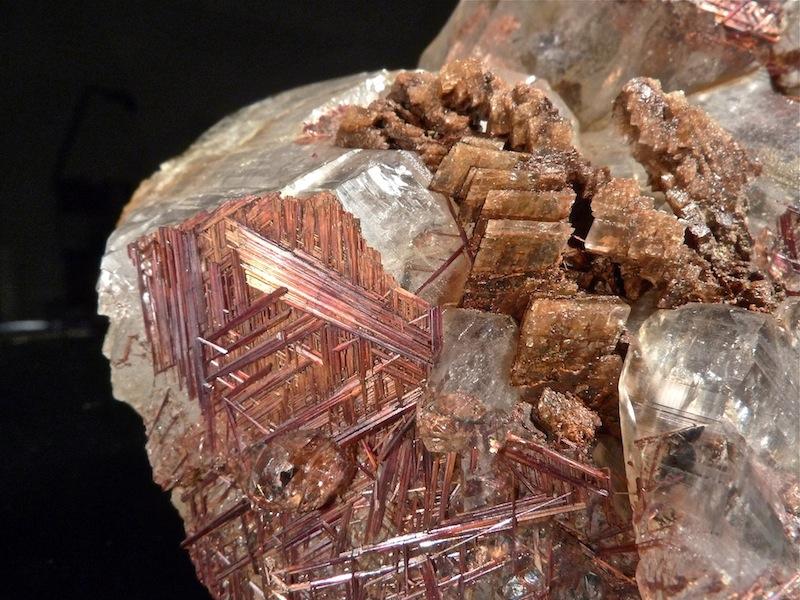
|
| Description: |
Rutile on quartz
Alchuri, Shigar Valley, Skardu District, Pakistan
FOV: 3 cm |
|
| Viewed: |
44691 Time(s) |
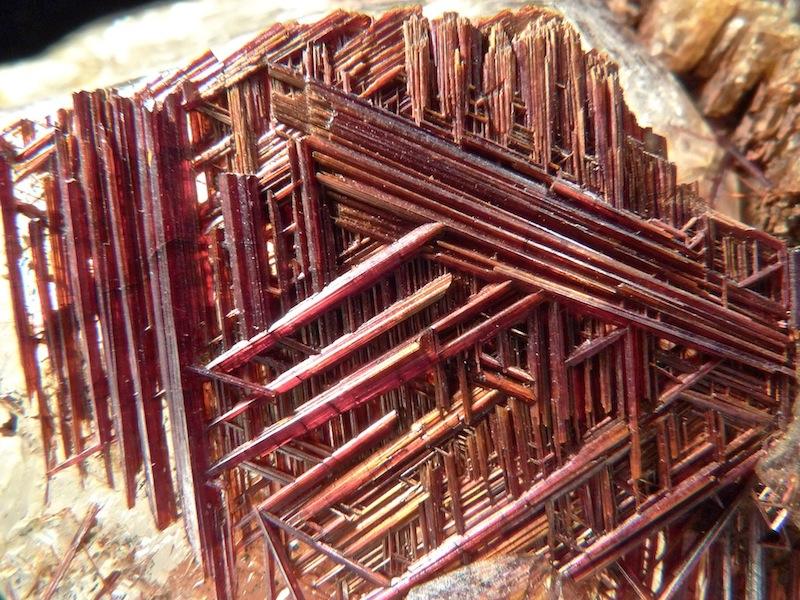
|
_________________
Josele |
|
| Back to top |
|
 |
John S. White
Site Admin

Joined: 04 Sep 2006
Posts: 1298
Location: Stewartstown, Pennsylvania, USA



|
 Posted: Nov 28, 2013 06:17 Post subject: Re: Epitaxial rutile Posted: Nov 28, 2013 06:17 Post subject: Re: Epitaxial rutile |
|
|
Very nice close-up in the third photo. This is not epitaxy. What you have is twinned rutile in a very common form, often referred to as reticulated or geniculated, and rutile of this habit is known as sagenite. Twinned rutile like this is typical on quartz but can also be found on other substrates, such as siderite. Here are two examples from my collection of such twinned rutile in quartz from Lavro do Cascalho, near Conselheiro Pena, Minas Gerais, Brazil. The smaller one is 4 cm across and the larger elongated one is nearly 11 cm. In the larger piece some of the rutile is entirely enclosed in quartz while much of it is not.
My guess is that this rutile is black because of a relatively high iron content, while your sample probably contains very little iron.
| Description: |
|
| Viewed: |
44656 Time(s) |
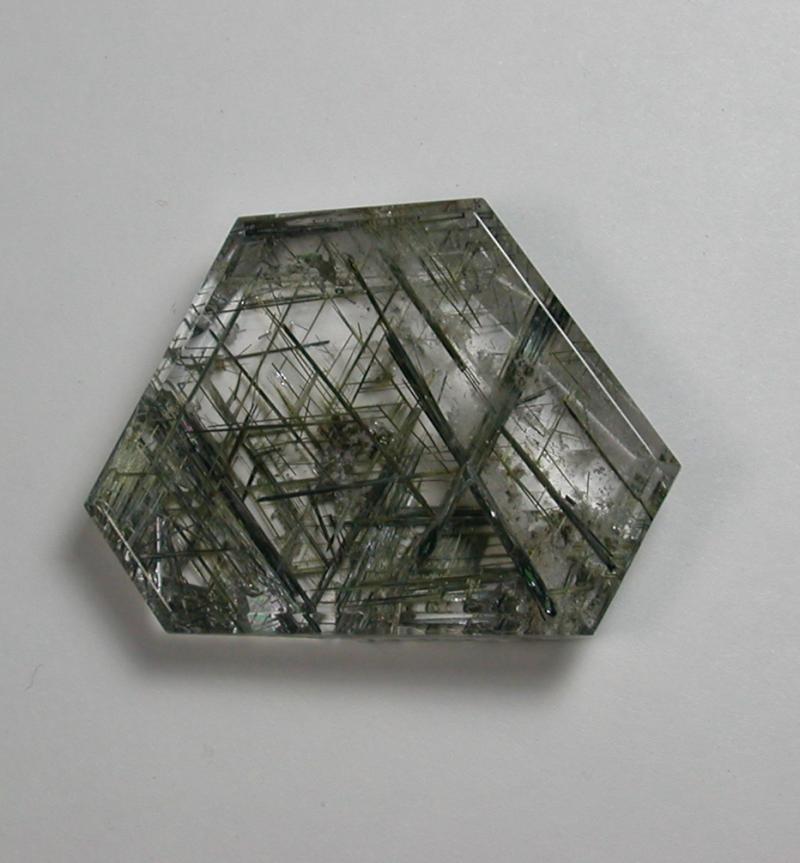
|
| Description: |
|
| Viewed: |
44688 Time(s) |
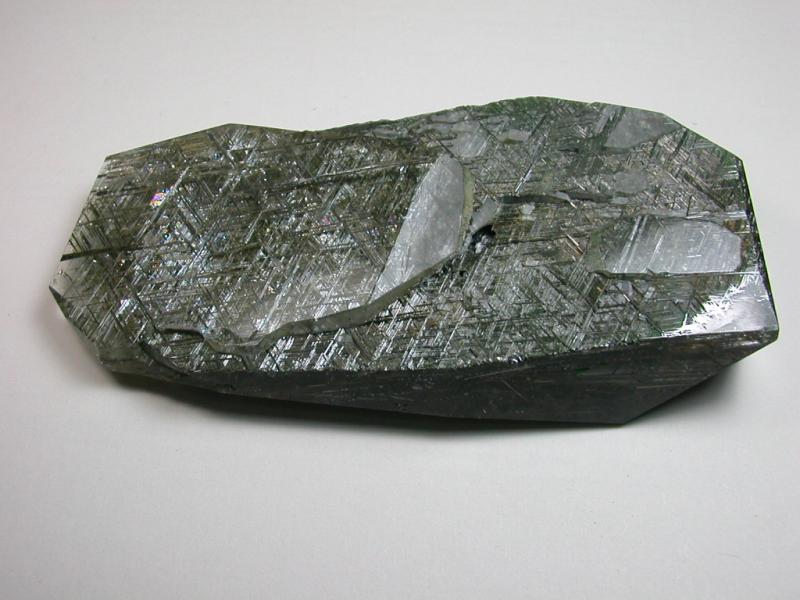
|
_________________
John S. White
aka Rondinaire |
|
| Back to top |
|
 |
Josele

Joined: 10 Apr 2012
Posts: 410
Location: Tarifa, Spain



|
 Posted: Nov 28, 2013 07:19 Post subject: Re: Epitaxial rutile Posted: Nov 28, 2013 07:19 Post subject: Re: Epitaxial rutile |
|
|
Thank you John, then I was confused about sagenite growth.
In accord with this, I suppose that angles between crystals and twin plane is 65º (as is in rutile sixlings), not 60º as in epitaxial rutile on hematite. Given that there is two twinning operation affecting the same crystal, can this be considered as a particular case of cyclic twinning?
| Description: |
Rutile on and into quartz
Alchuri, Shigar Valley, Skardu District, Pakistan
FOV: 6 cm |
|
| Viewed: |
44584 Time(s) |
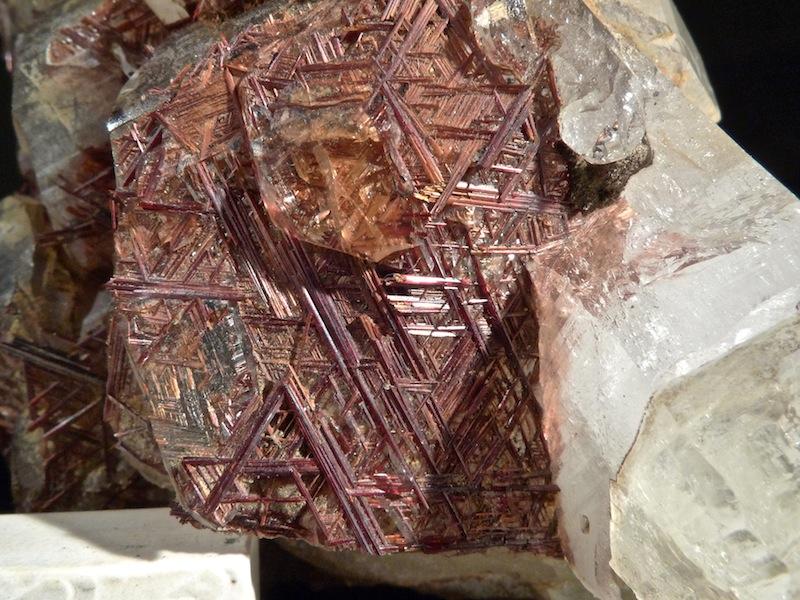
|
_________________
Josele |
|
| Back to top |
|
 |
John S. White
Site Admin

Joined: 04 Sep 2006
Posts: 1298
Location: Stewartstown, Pennsylvania, USA



|
 Posted: Nov 28, 2013 08:39 Post subject: Re: Epitaxial rutile Posted: Nov 28, 2013 08:39 Post subject: Re: Epitaxial rutile |
|
|
In my earlier post I used the term geniculated incorrectly, for which I apologize. Geniculated twins are those that consist of just two components joined together like arm or leg bones at an angle.
_________________
John S. White
aka Rondinaire |
|
| Back to top |
|
 |
Martin Rich

Joined: 15 Aug 2013
Posts: 127
Location: Lower Austria



|
 Posted: Nov 28, 2013 15:27 Post subject: Re: Epitaxial rutile Posted: Nov 28, 2013 15:27 Post subject: Re: Epitaxial rutile |
|
|
An other possibility is a pseudomorph of Rutile after preexistent Ilmenite. Only a thought of myself.
_________________
We are living on the matrix. |
|
| Back to top |
|
 |
Pete Richards
Site Admin
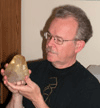
Joined: 29 Dec 2008
Posts: 843
Location: Northeast Ohio



|
 Posted: Nov 28, 2013 16:07 Post subject: Re: Epitaxial rutile Posted: Nov 28, 2013 16:07 Post subject: Re: Epitaxial rutile |
|
|
| John S. White wrote: | | ... This is not epitaxy. What you have is twinned rutile in a very common form, often referred to as reticulated ... |
Somehow, John and I have a knack for coming down on opposite sides of a theory! Josele is right to raise the question of the angles between crystals, which should not be 60° if these are twins. Martin Rich offers a good idea - that the precursor could have been ilmenite rather than hematite, since the ilmenite could supply the titanium to make the rutile.
I have little crystals from Mont Saint-Hilaire which look exactly like ilmenite plates, except that they are decorated with tri-directional lines just like sagenite, and often have projecting spikes of rutile. SEM-EDS shows that they contain no iron - only titanium and oxygen. These are oriented replacements of ilmenite by rutile that started out as epitactic associations, I believe.
I have also seen thick sagenitic mats of rutile embedded in vein quartz, and they clearly have a platy shape with well-defined edges. The surrounding quartz proves that this was the original shape of the aggregate. We have the same problem here as we have with cyclic twinning - if it is twinning, how does the rutile know how to stay in one plane as it twins, and fill out the well-defined shape but grow no farther? There are four equivalent and equally likely directions of twinning for rutile which define two planes at right angles to each other. A multiply twinned rutile should at least be composed of two intersecting sheets of needle-shaped crystals, and more likely should be a three-dimensional bush, not a planar disc.
I'm not prepared to say that sagenites NEVER form by twinning, though I find it difficult to see how it could happen. And in some cases, I believe we can infer that they form by oriented replacement of ilmenite or some other mineral.
| Description: |
Rutile after ilmenite
Poudrette Quarry, Mont Saint-Hilaire, Quebec, Canada
crystals are about 1 mm across |
|
| Viewed: |
44499 Time(s) |
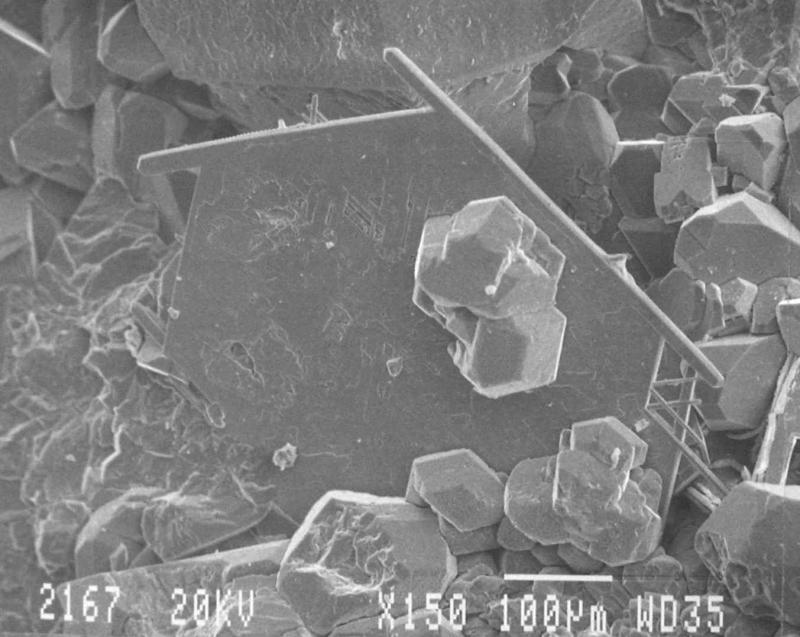
|
| Description: |
Rutile after ilmenite
Poudrette Quarry, Mont Saint-Hilaire, Quebec, Canada
crystals are about 1 mm across
Detail of first SEM image |
|
| Viewed: |
44482 Time(s) |
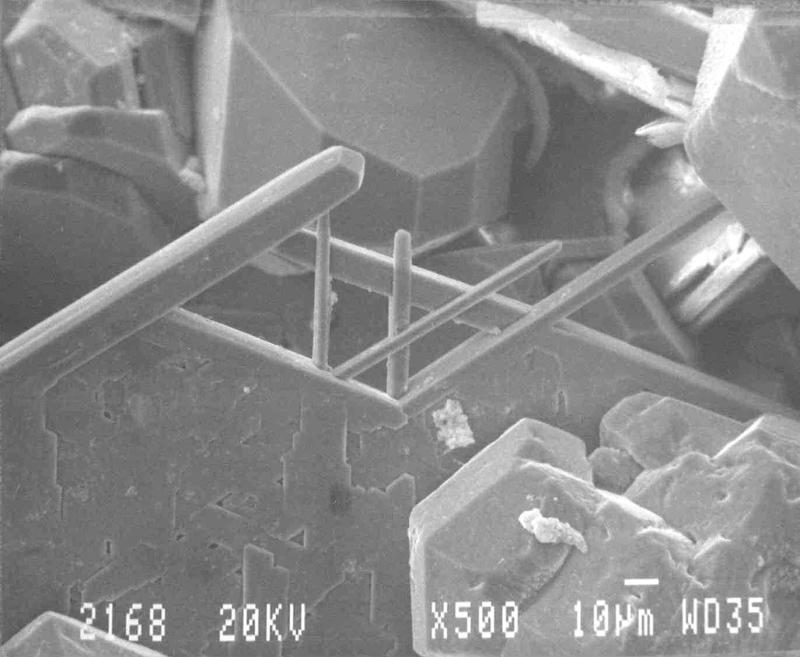
|
| Description: |
Rutile after ilmenite
Poudrette Quarry, Mont Saint-Hilaire, Quebec, Canada
crystals are about 1 mm across |
|
| Viewed: |
44506 Time(s) |

|
| Description: |
Rutile after ilmenite?
Rowlandsville (now part of Philadelphia), Pennsylvania
Rutile disc is about 2" across |
|
| Viewed: |
44440 Time(s) |
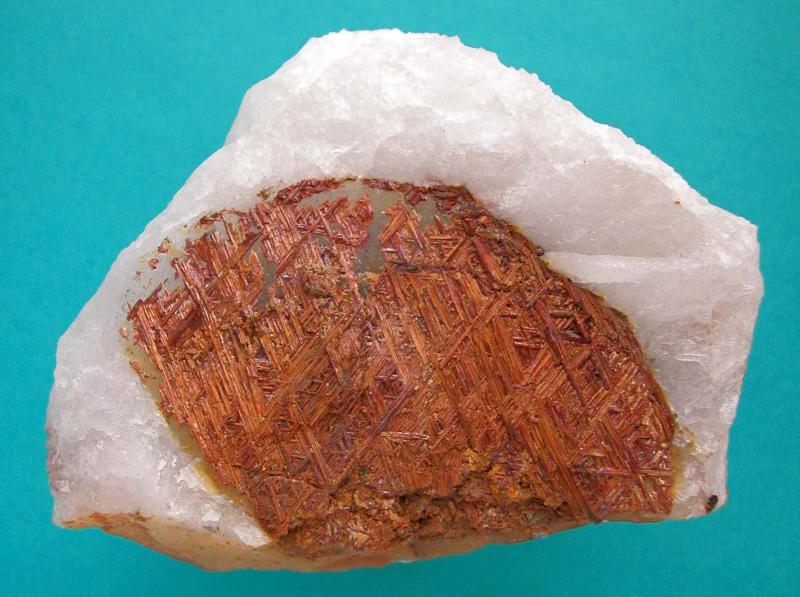
|
_________________
Collecting and studying crystals with interesting habits, twinning, and epitaxy |
|
| Back to top |
|
 |
Jordi Fabre
Overall coordinator of the Forum

Joined: 07 Aug 2006
Posts: 5026
Location: Barcelona



|
 Posted: Nov 28, 2013 16:38 Post subject: Re: Epitaxial rutile Posted: Nov 28, 2013 16:38 Post subject: Re: Epitaxial rutile |
|
|
| More info: Ilmenite pseudo
|
|
| Back to top |
|
 |
Josele

Joined: 10 Apr 2012
Posts: 410
Location: Tarifa, Spain



|
 Posted: Nov 28, 2013 18:49 Post subject: Re: Epitaxial rutile Posted: Nov 28, 2013 18:49 Post subject: Re: Epitaxial rutile |
|
|
Epitaxy, twinning, pseudomorphism... all together... Wow! this becomes more and more interesting!
From my naive ignorance I can think only about angles to determine if a sagenite is due to epitaxy or twinning. There is not much difference between 60 and 65º having in mind that nature tend to create divergences in theoretically parallel growth crystals.
Let me add some fuel to the fire with two simple observations:
| Description: |
| A is somewhat shorter than B and C, which are almost equal, conforming a more or less isosceles triangle little higher than the equilateral. To my understand, if is a twin, this triangle should be isosceles but slightly lower than equilateral. Pictures were taken perpendicular to sagenite plane. Measurements based on photos are not very reliable data but can be a clue. |
|
| Viewed: |
44403 Time(s) |
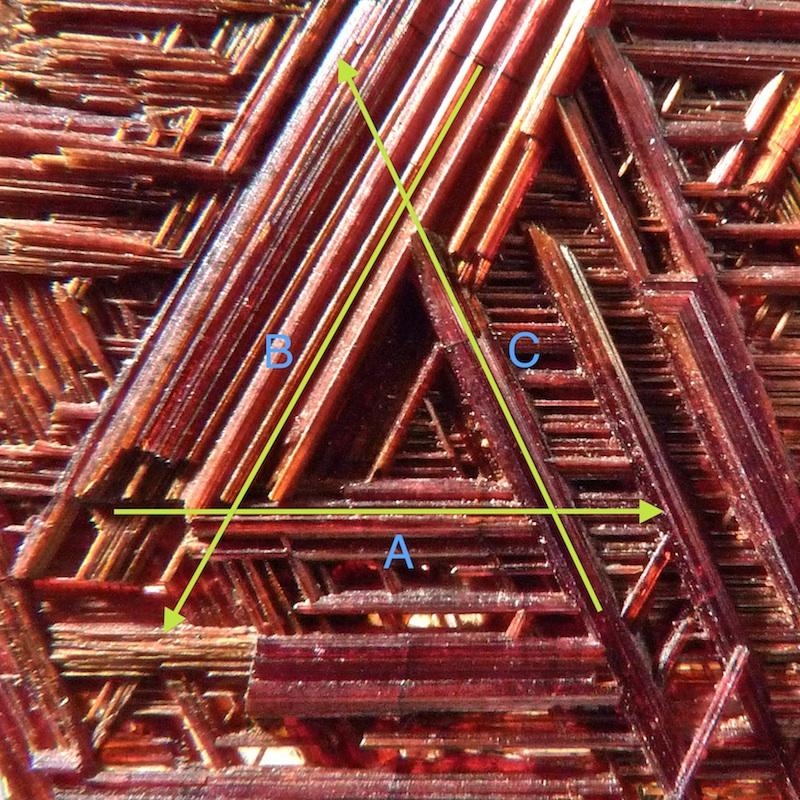
|
| Description: |
| This is supposed epitaxial rutile on hematite (or perhaps ilmenite pseudo after epitaxial rutile on hematite?) The triangle conformed by the three main directions is equilateral. Not absolutely reliable but... |
|
| Viewed: |
44402 Time(s) |
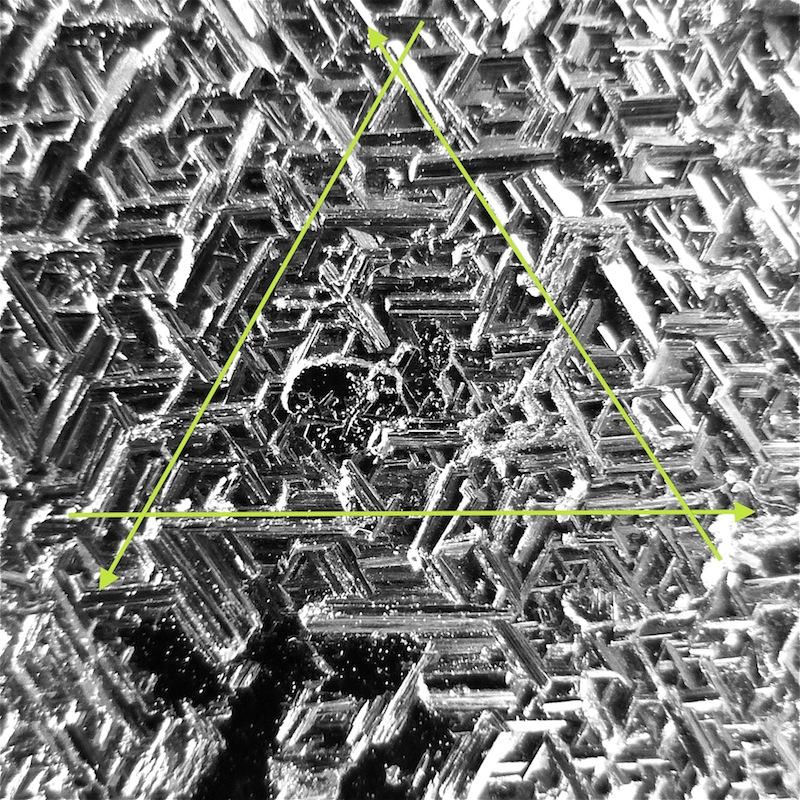
|
| Description: |
Entire sample of previous photo
Haramosh Mts., Skardu District, Pakistan
6 x 4,5 x 1,5 cm |
|
| Viewed: |
44406 Time(s) |
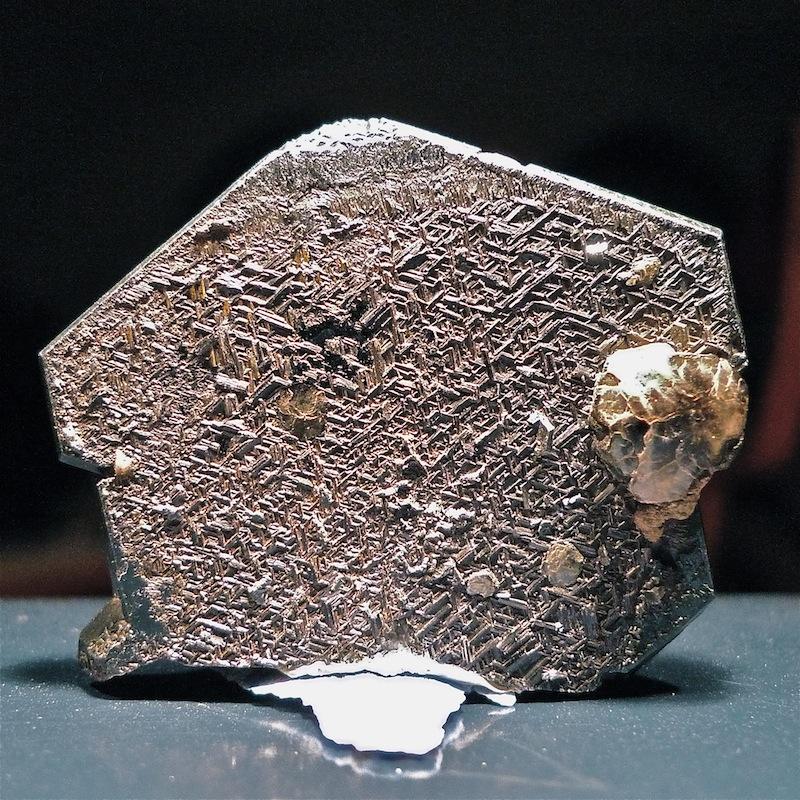
|
_________________
Josele |
|
| Back to top |
|
 |
marco campos-venuti

Joined: 09 Apr 2014
Posts: 227
Location: Sevilla



|
 Posted: Jul 17, 2014 12:19 Post subject: Re: Epitaxial rutile Posted: Jul 17, 2014 12:19 Post subject: Re: Epitaxial rutile |
|
|
Just some pictures of the famous star rutile quartz. In these samples crystallization starts with hematite crystal (iron oxide) and when iron finished, then start to crystallize the rutile (titanium oxide). The rutile is red to yellow because most of the iron was used in the hematite crystal.
| Description: |
Star of rutile in quartz crystal
Novo Horizonte, Bahia, Brazil
A small hematite crystal lies at the center (6.5 cm) |
|
| Viewed: |
42062 Time(s) |

|
| Description: |
Star of rutile in quartz crystal
Novo Horizonte, Bahia, Brazil
With hematite crystal at the center |
|
| Viewed: |
42141 Time(s) |
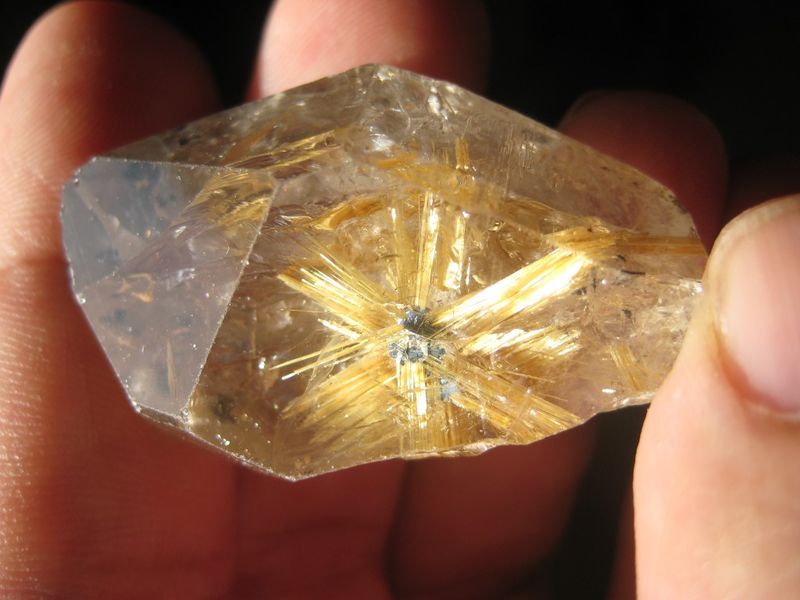
|
| Description: |
Star rutile in quartz
Novo Horizonte, Bahia, Brazil
25 mm, 30.3 cts |
|
| Viewed: |
42022 Time(s) |
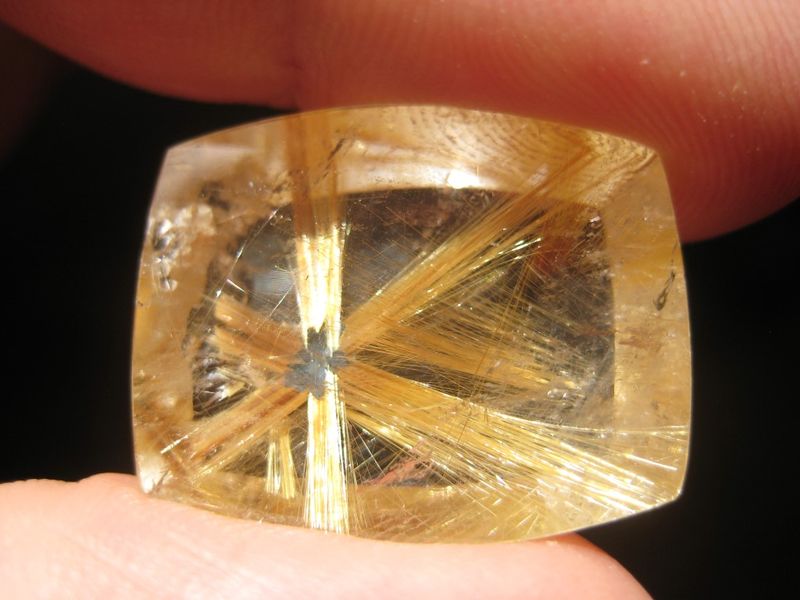
|
|
|
| Back to top |
|
 |
marco campos-venuti

Joined: 09 Apr 2014
Posts: 227
Location: Sevilla



|
 Posted: Jul 17, 2014 12:22 Post subject: Re: Epitaxial rutile Posted: Jul 17, 2014 12:22 Post subject: Re: Epitaxial rutile |
|
|
In this sample the rutile star grows along an elongated hematite.
| Description: |
Star rutile in quartz
Novo Horizonte, Bahia, Brazil
14 mm, 18.2 cts |
|
| Viewed: |
41961 Time(s) |
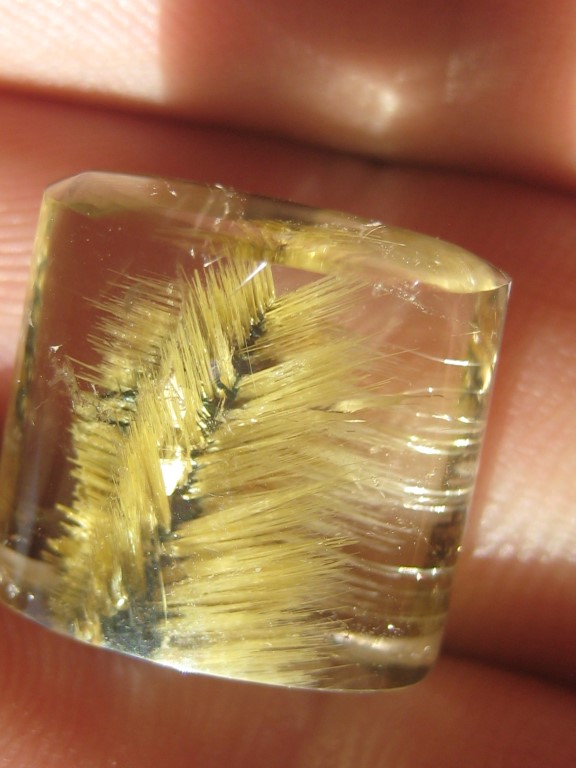
|
| Description: |
| top view of the same sample |
|
| Viewed: |
41994 Time(s) |
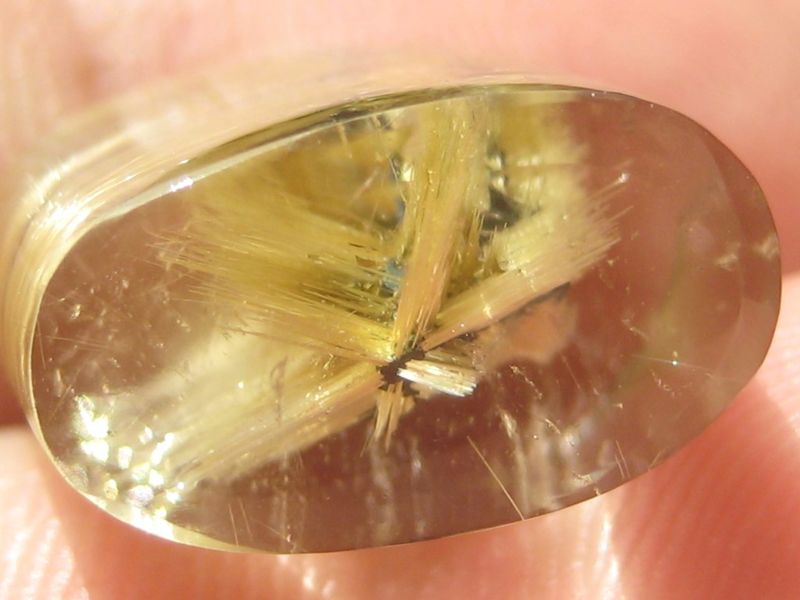
|
|
|
| Back to top |
|
 |
marco campos-venuti

Joined: 09 Apr 2014
Posts: 227
Location: Sevilla



|
 Posted: Jul 17, 2014 12:26 Post subject: Re: Epitaxial rutile Posted: Jul 17, 2014 12:26 Post subject: Re: Epitaxial rutile |
|
|
This is sagenite. It is called green rutile. Just a little bit green, I don't know why. It is from an old deposit.
| Description: |
Sagenite rutile in quartz
Brazil
24 mm, 23.3 cts |
|
| Viewed: |
42032 Time(s) |
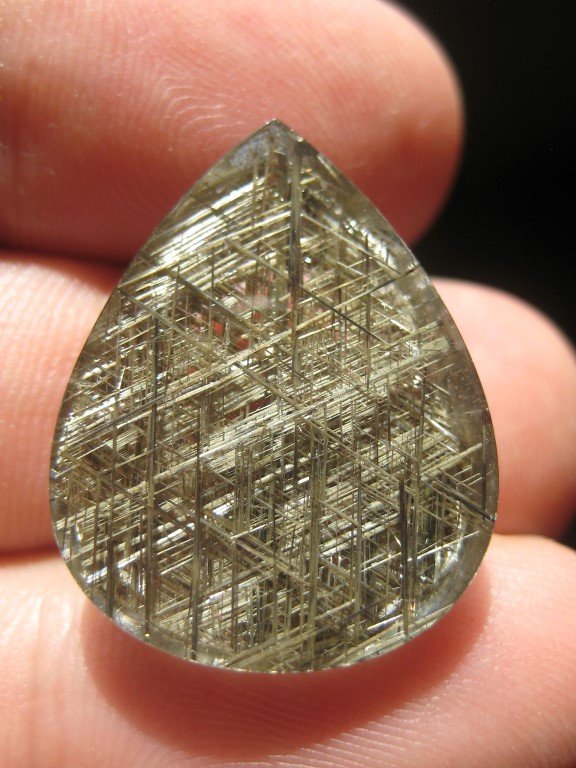
|
|
|
| Back to top |
|
 |
marco campos-venuti

Joined: 09 Apr 2014
Posts: 227
Location: Sevilla



|
 Posted: Jul 17, 2014 12:28 Post subject: Re: Epitaxial rutile Posted: Jul 17, 2014 12:28 Post subject: Re: Epitaxial rutile |
|
|
An other sagenite, but a bit different. It is yellow and is composed of individual stars.
| Description: |
Sagenite rutile in quartz
Brazil
25 mm, 28.6 cts |
|
| Viewed: |
42045 Time(s) |
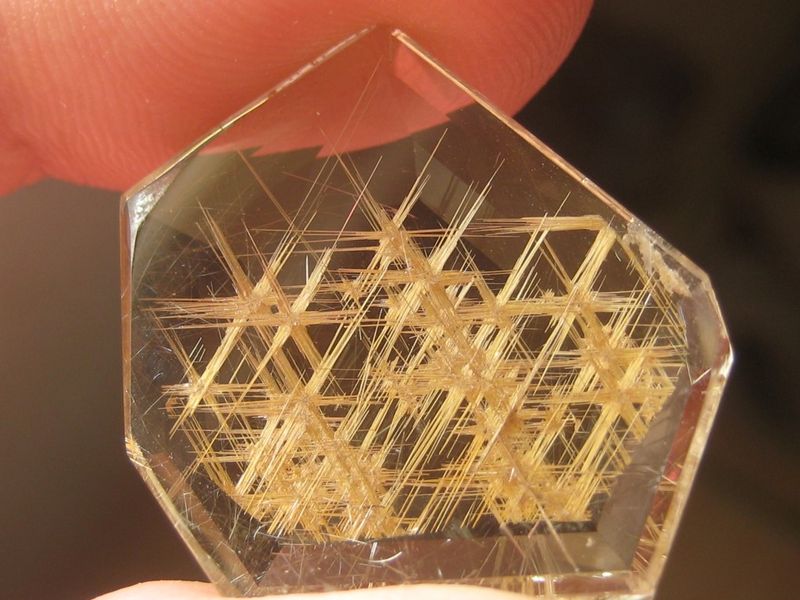
|
|
|
| Back to top |
|
 |
Mark Ost

Joined: 18 Mar 2013
Posts: 516
Location: Virginia Beach



|
 Posted: Jul 17, 2014 20:00 Post subject: Re: Epitaxial rutile Posted: Jul 17, 2014 20:00 Post subject: Re: Epitaxial rutile |
|
|
| Stunning examples Marco
|
|
| Back to top |
|
 |
stef4412
Joined: 14 Apr 2013
Posts: 11
Location: Embrun


|
 Posted: Jul 25, 2014 15:54 Post subject: Re: Epitaxial rutile Posted: Jul 25, 2014 15:54 Post subject: Re: Epitaxial rutile |
|
|
| Josele wrote: | Epitaxy, twinning, pseudomorphism... all together... Wow! this becomes more and more interesting!
From my naive ignorance I can think only about angles to determine if a sagenite is due to epitaxy or twinning. There is not much difference between 60 and 65º having in mind that nature tend to create divergences in theoretically parallel growth crystals.
Let me add some fuel to the fire with two simple observations: |
In fact I think that crystals in your first photo are not twinned : some elements of the twin seems to be missing
|
|
| Back to top |
|
 |
Josele

Joined: 10 Apr 2012
Posts: 410
Location: Tarifa, Spain



|
 Posted: Jul 25, 2014 16:24 Post subject: Re: Epitaxial rutile Posted: Jul 25, 2014 16:24 Post subject: Re: Epitaxial rutile |
|
|
More pics:
| Mineral: | Rutile |
| Locality: | | Alchuri, Shigar District, Gilgit-Baltistan (Northern Areas), Pakistan |  |
|
| Dimensions: | FOV: 5 cm |
| Description: |
|
| Viewed: |
41139 Time(s) |
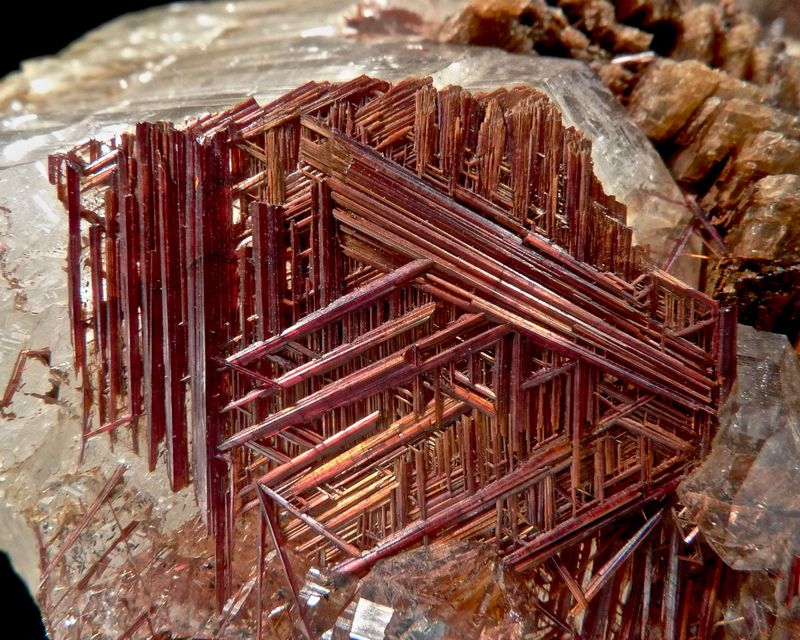
|
|
|
| Back to top |
|
 |
|





